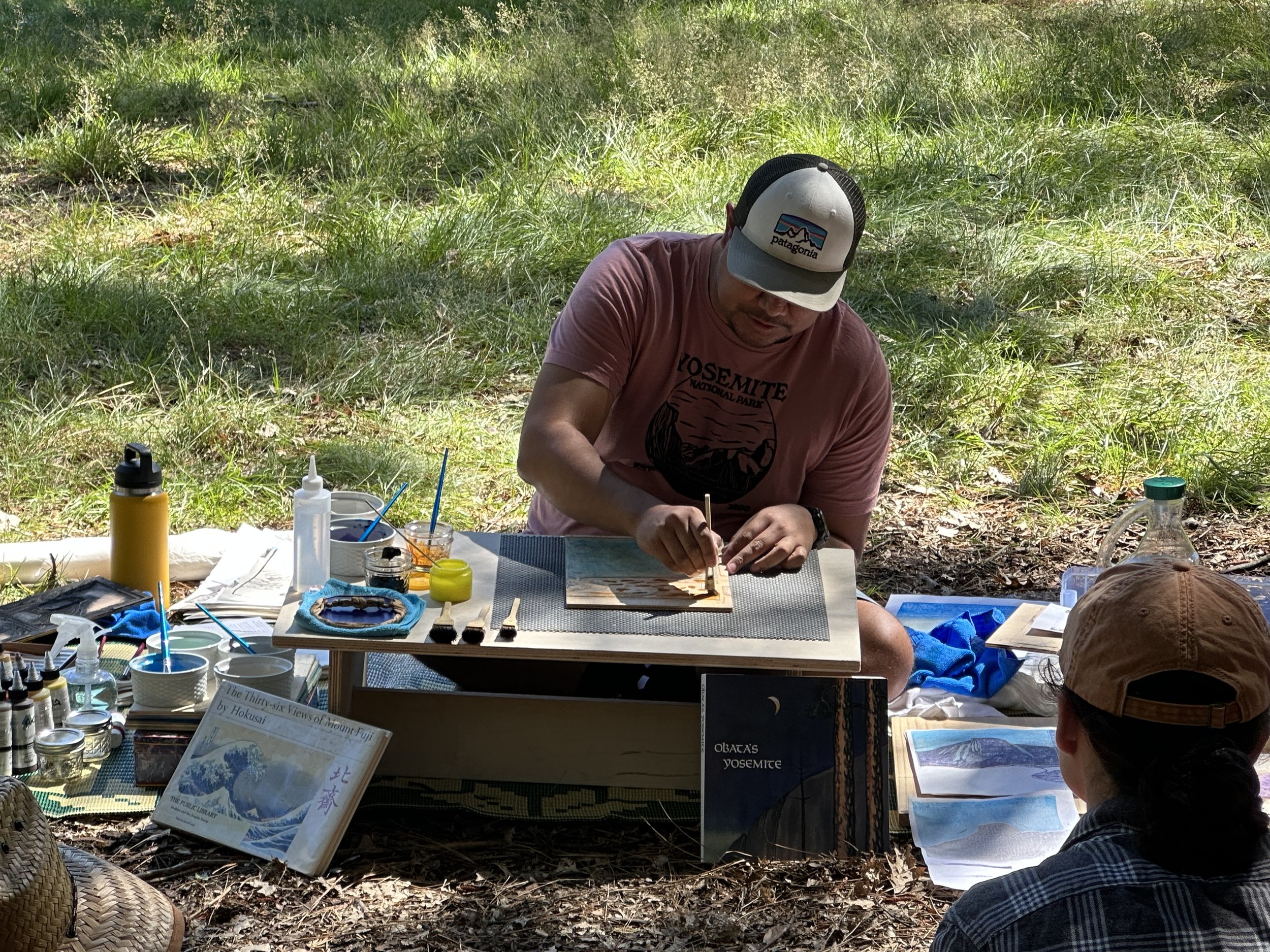Learning Mokuhanga
Mount Fuji reflects in Lake Kawaguchi, seen from the Misaka Pass in Kai Province
My experience as an artist has taken many turns: from watercolor painting in high school, to drawing during community college, to a brief excursion studying classical drawing. My latest venture is Mokuhanga or Japanese woodblock. Getting to this moment feels like a natural progression. With linocut I learned the basics of relief printing, I got really comfortable with the process, the feel of the linoleum and the way it cut and I was able to chip at it.
Mokuhanga on the other hand is a centuries-old technique that has captivated artists worldwide with its delicate beauty and detailed execution. Unlike Western printmaking methods, Mokuhanga used water-based inks and hand tools, resulting in prints that possess a unique softness and subtlety.
This process was both strangely familiar and foreign to me. There is a block, there are gouges, paper and ink. Yet again, there is also kento, nori, sumi, and washi. If those words went over your head, I don’t blame you; but if you stick along with me enough you will learn all about them.
Embracing the Craft
Learning Mokuhanga has been a humbling experience. The process is labor-intensive and requires a level of patience and precision that is both challenging and rewarding. From carving the woodblocks to preparing the paper, every step demands a careful, considered approach.
After the summer of 2022 I spent a literal year reading, watching and learning all I could about Mokuhanga. I wanted to know what every tool was called, its development, and most importantly the correct way to utilize it. By the time summer 2023 rolled around I knew the basic concept but had forgotten one important step: practical application.
I spent so much time reading books, making notes, and buying the correct tools that I did not have enough time to practice all the concepts I was learning. When Obata Art Weekend 2023 rolled around, I was as green as grass. I am still green, but the grass is a few inches taller.
A Deep Respect for the Tradition
One of the most profound lessons Mokuhanga has taught me is a deep respect for the tradition and the craftsmen who have kept this art form alive for centuries. The precision and dedication required at every stage of the process have given me a new appreciation for the skill and artistry involved.
While I am not of Japanese descent, I feel a strong connection to the cultural heritage of Mokuhanga. The philosophy behind the technique, which emphasizes harmony, balance, and a deep connection to nature, resonates with my own connection to our beautiful California landscapes.
Sharing the Journey
Recently someone on Threads left a very nice comment regarding my Mokuhanga studies. In a way it completely validated the purpose of sharing everything. As I continue to explore and refine my skills in Mokuhanga, I am excited to share this journey with you. Whether you are an experienced artist or a curious beginner, I hope that you tag along this journey and hopefully inspire you to learn something new too.
Hope to see you in a few days for the next installment!




